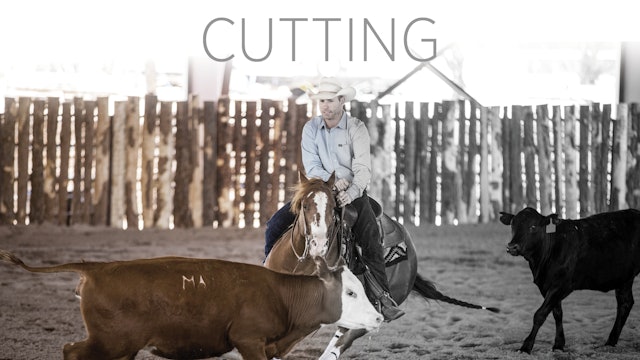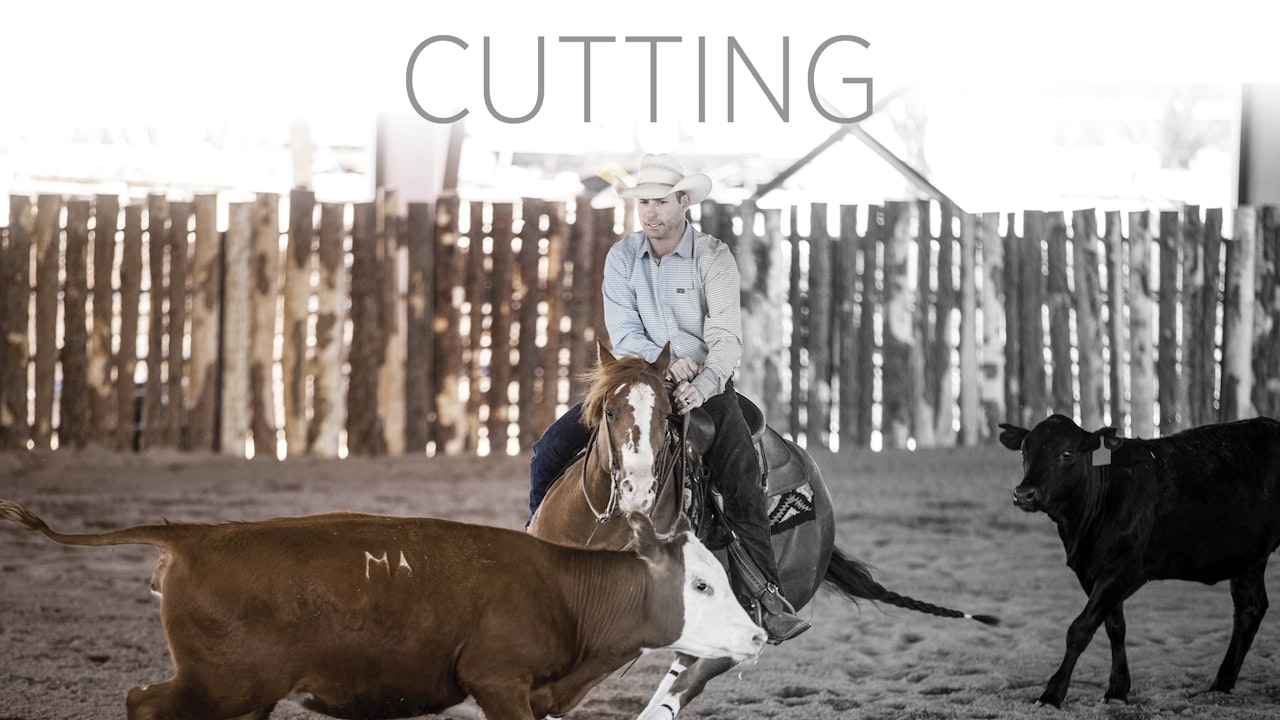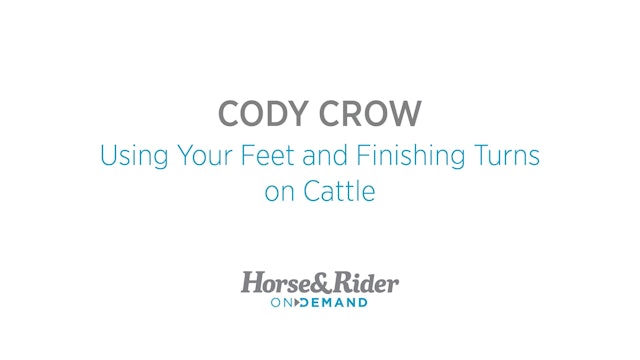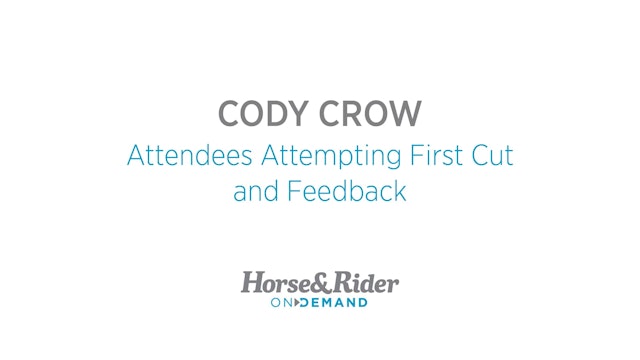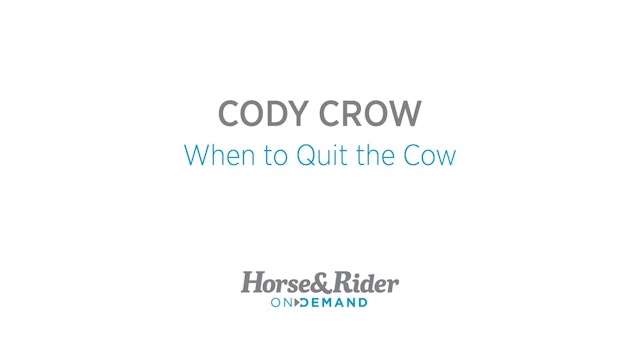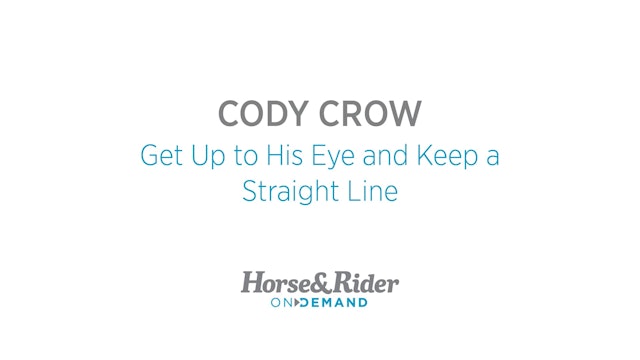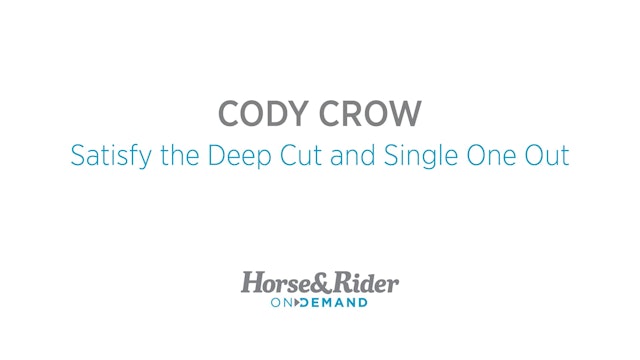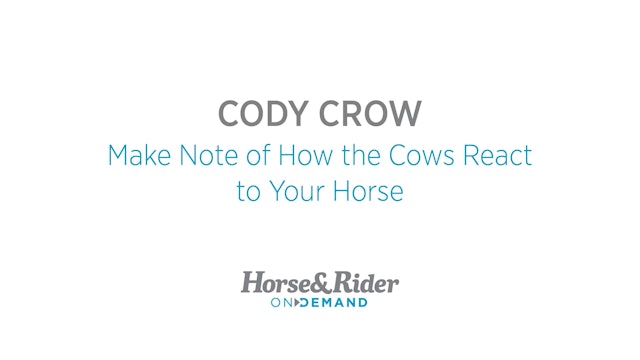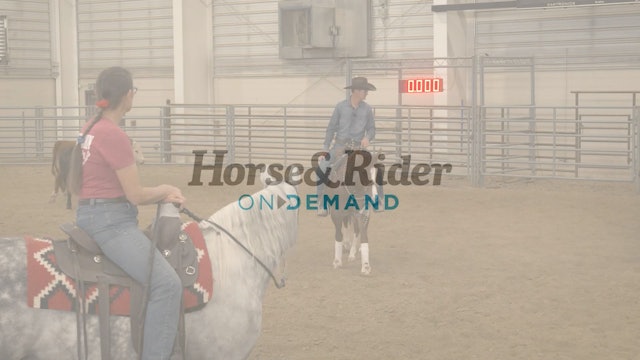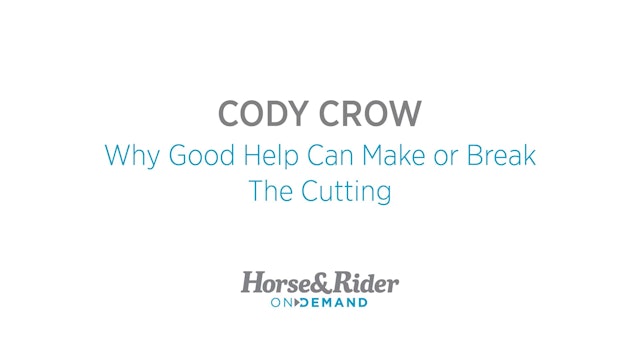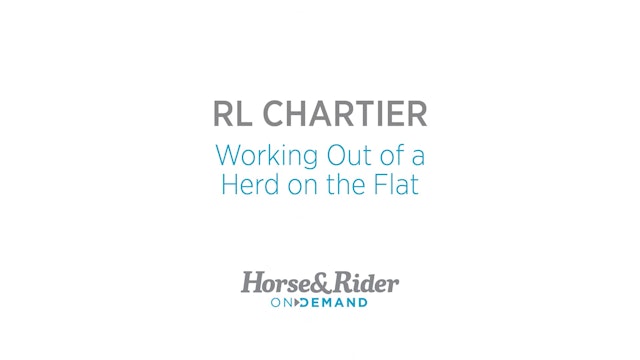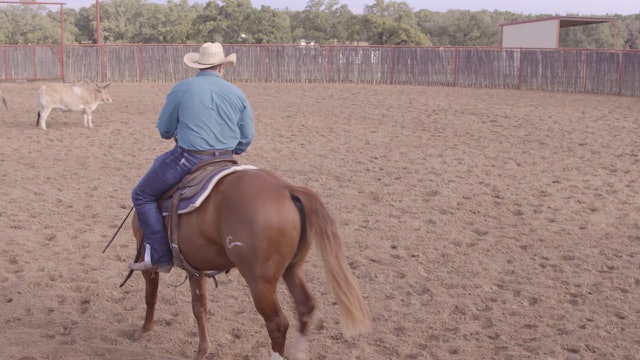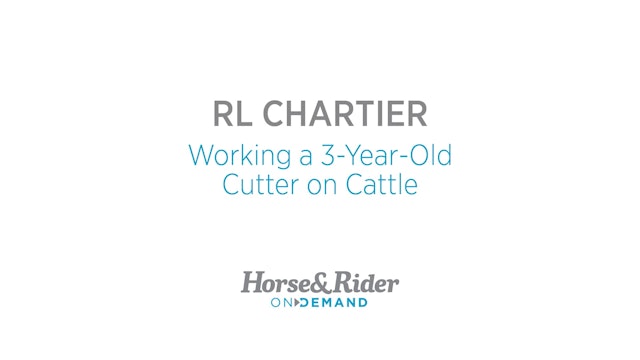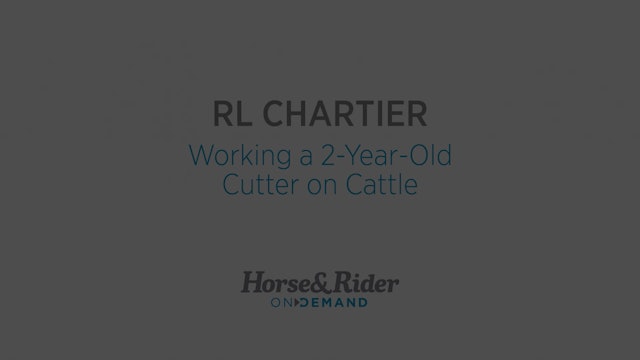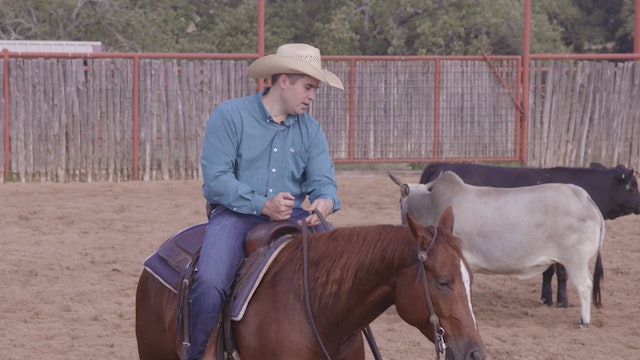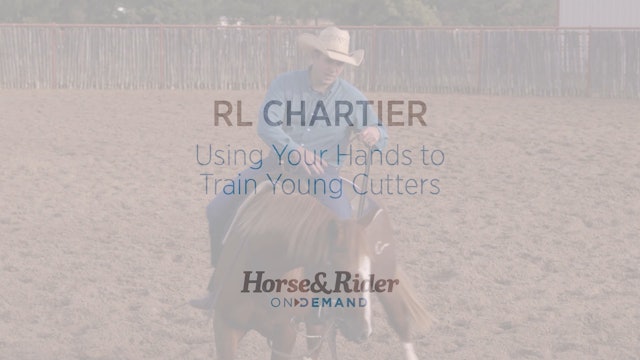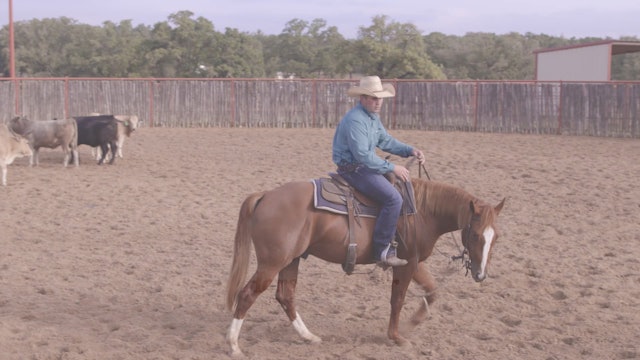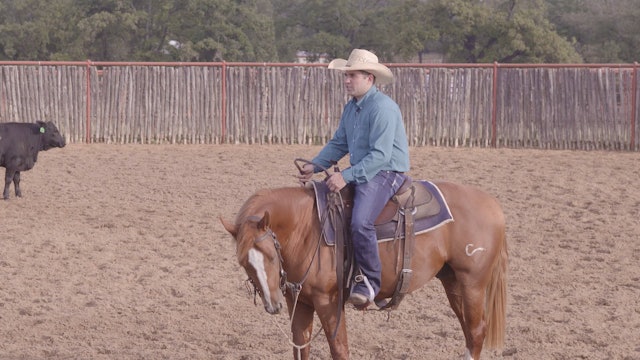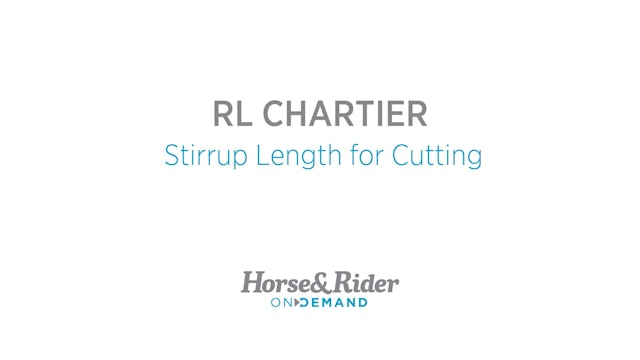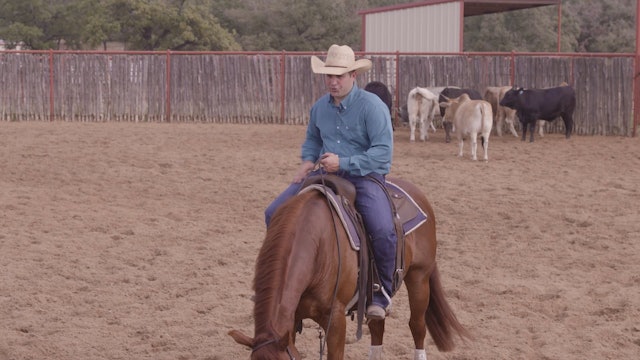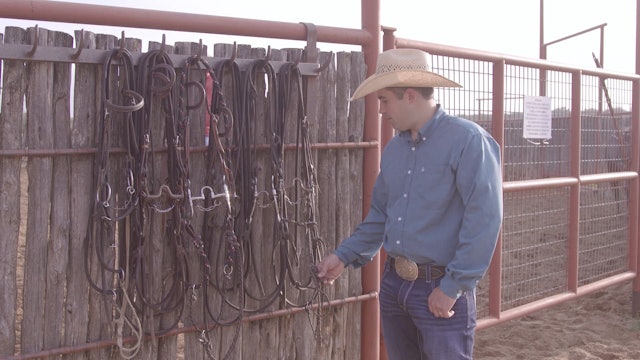Cutting
Step into the fast-paced, high-stakes world of cutting horse competition with Ride TV’s Cutting video series—your front-row seat to one of Western performance’s most thrilling disciplines. This curated collection dives deep into the art and intensity of cutting, featuring elite runs, expert breakdowns, and insider tips from top professionals who live and breathe the sport. Whether you’re in the saddle chasing your next clean cut or tuning in to learn what separates a 72 from a 76, these videos deliver real-world knowledge, seasoned strategy, and arena-tested technique. From reading cattle and refining your horse’s stop, to understanding scoring and building a show-ready run—Cutting on Ride TV is your all-access pass to better, smarter riding.
-
Working a Young Horse on the Flag
Winston Hansma simulates what working with a 2-year-old on a flag looks like. He demonstrates how he works on the fundamentals with the horse to help him grow in his training and use his hands in accordance with his feet.
-
Dry Work for Working the Flag
Winston Hansma explains what dry work is and why it's important to do before working the flag.
-
Using Your Feet and Finishing Turns on Cattle
As you get more comfortable working the cow, Cody instructs you to use your feet to keep your horse straight, and to finish your turns. Don't let your horse push into the cow, and keep them between your hands.
-
Attendees Attempting First Cut and Feedback
Cody talks about when it's okay to quit your cow and back off, and when you will lose points for quitting. When a cow is not engaging with you, you can quit and choose another. Be careful not to hot quit a cow when it is engaging with you.
-
When to Quit the Cow
Once you've selected a cow to cut, keep a straight line across the pen and keep it from returning to the herd. Keep pace with the cow by staying in line with his eye, and hold your straight line across the pen.
-
Get Up to His Eye and Keep a Straight Line
Once you've looked at the cows and their reactions, satisfy the deep cut by bringing out a bunch of cows at once. Then, single out one that looks as though it will be an adequate cow to work.
-
Satisfy the Deep Cut and Single One Out
Once you've looked at the cows and their reactions, satisfy the deep cut by bringing out a bunch of cows at once. Then, single out one that looks as though it will be an adequate cow to work.
-
Make Note of How the Cows React to Your Horse
Walk through the herd with Cody and examine how the cows react to his horse. Look for cows that don't try and hide, or run away, but one that looks alert and curious.
-
Settling the Herd and Inspecting the Herd
Cody walks through the herd and explains why it is important to settle them, and inspect the cows as you ride through. This is a time to check cattle for health problems, or any other issues that might make them not a suitable choice when picking one to cut.
-
Why Good Help Can Make or Break The Cutting
Cody explains how you will need help when cutting, and to be prepared to either jump in or step out of the way, depending on how much help there is.
-
Working out of a Herd on the Flat
Working out of the herd on the flat is about holding your cow on the line and prepares you and your horse for the show pen. Keeping the pressure on the cow will help you to score high.
-
Working a Young Horse on the Flag
Using a flag is beneficial for young horses to introduce your horse to cattle. Starting a horse on the flag allows your horse to build muscle memory as he works on the repetition.
-
Working a 3-Year-Old Cutter on Cattle
Working a 3-year-old on cattle is about transitioning the young horse into a show horse. These young horse's are preparing for futurities and require additional confidence to hold and work a cow.
-
Working a 2-Year-Old Cutter on Cattle
RL demonstrates working cattle on a 2-year-old cutter that is just learning the event.
-
Get to Know RL Chartier and Winston Hansma
Step into the lives of Horse&Rider OnDemand cutting experts RL Chartier and Winston Hansma. From the beginning until now, these trainers share their stories and provide insight as to what has shaped them into incredible horsemen.
-
Where to Hold Your Rein Hand
Once you've learned how to ride your horse on a draped rein, you'll need learn where to hold your rein hand while you're competing. RL demonstrates where he likes to hold his rein hand.
-
Warm Up for a Cutting Show
Warm up your finished cutting horse at the show by working him flat and doing dry work. RL demonstrates a warm up that he uses on his show horses.
-
Using Your Hands to Train Young Cutters
Although a finished cutting horse doesn't require you to use your hands as often, when you're working with a young cutting horse, your hands are essential tools to train him to accurately perform his job.
-
Timing and Cues
Cutting horses are generally "feely" and require direct timing and cues. RL breaks down how to get your timing correct when you're asking for your cues.
-
Teaching Cow Sense
Ideally as a competitor, you want a horse with natural ability and cow sense. However, you can train a horse to have cow sense. RL explains how to teach your horse cow sense.
-
Stirrup Length for Cutting
Stirrup adjustment is important to help maintain proper body positioning while cutting. RL explains how he likes to adjust the stirrups for himself and his clients.
-
Reasons to Pick Up Your Rein Hand
When you're practicing, it's OK to pick up on your horse to help correct him through the manuevers. RL offers a list of reasons why you may pick up your rein hand when you're working with your horse.
-
Practicing to Prepare for Showing
Working your horse at home helps to prepare you for competition. Here's what you should be practicing at home to prepare for the show.
-
Martingales for Cutting
Using a martingale on your horse in the practice pen will help him keep his head lower through the turns or keep his head lower while working on backing. Learn how to properly use one with RL Chartier.

